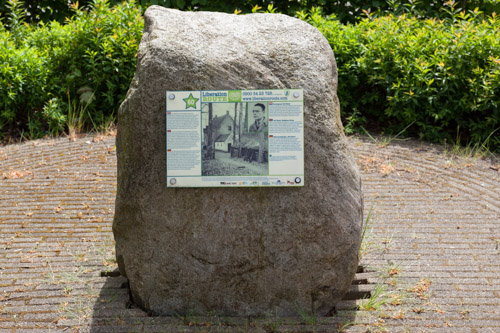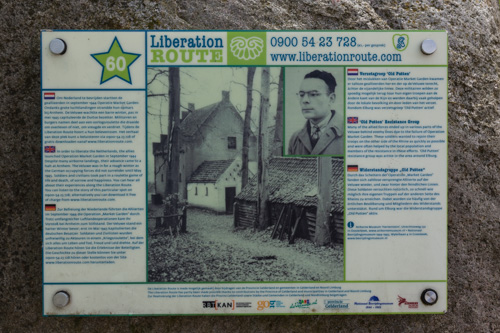Liberation Route Marker 060: ‘Old Putten’ Resistance Group
‘Old Putten’ Resistance Group
Many of the allied forces ended up in various parts of the Veluwe behind enemy lines due to the failure of Operation Market Garden. These soldiers wanted to rejoin their troops on the other side of the Rhine as quickly as possible and were often helped by the local population and members of the resistance in these efforts. 'Old Putten' resistance group was active in the area around Elburg.
There was a resistance movement in Elburg called the 'Olde Putten', named after the manor house that belonged to the Rambonnet family. The group carried out sabotage and distributed weapons. After the failure of Operation Market Garden in September 1944, members of the 'Olde Putten' took British soldiers into hiding and helped them escape to the south of The Netherlands, which had already been liberated. During Operation Pegasus 1, on 22nd October 1944, 149 Brits escaped across the River Rhine to the south of The Netherlands.
In November 1944, there was a second attempt: twenty soldiers gathered at the Van Norel farm in Doornspijk to wait for a lorry to take them to Lunteren, but the lorry never arrived. The next evening, they moved to the Olde Putten manor and borrowed a car that belonged to the Organisation Todt (a Third Reich civil and military engineering group). They took it to the Westenrode farm south of the road that went from Ede to Otterlo where they hoped to join the others. But they jumped out of the car too early, and missed their rendezvous. When they heard shooting in the distance, they knew the operation had failed. The group hid and waited to be taken to safety by the resistance. Some of them managed to reach the south of The Netherlands a month later via the Biesbosch National Park.
Audiospot - ‘Old Putten’ Resistance Group
Liberation Route Europe is a certified Cultural Route of the Council of Europe. With hundreds of sites and stories in nine European countries, the route links the main regions along the advance of the Allied Forces in 1943-1945.
The entire route consists of themed routes that can be travelled by by hiking, walking, cycling and car. These routes pass numerous historical and interesting sites and tell stories from a multitude of perspectives that were important in the final phase of World War II.
Many routes feature listening spots, offering the opportunity to listen to a historical story at a location. In addition, many ‘Vectors of Memory’ have been placed, indicating that the passer-by is on one of the Liberation Routes.
The routes can be found on the Liberation Route Europe website or in the app through which many stories can also be listened to.
Do you have more information about this location? Inform us!
Source
- Text: TracesOfWar & Liberation Route Europe
- Photos: Arjan Vrieze
Nearby
Museum
- Museum History Revives - Het Harde
- Riding Artillery Corps Museum - 't Harde
- Nederlands Artillerie Museum (Dutch Artillery Museum) - 't Harde
Point of interest
- Information Sign & Location Refugee Camp Nunspeet - Nunspeet
- Information Sign Refugee Camp Nunspeet - Nunspeet
- Crash Site Hawker Tempest - Nunspeet
Monument
- Resistance Memorial Elburg - Elburg
- Memorials Jewish Cemetery Elburg - Elburg
- V1 Memorial Oosterwolde - Oosterwolde
Cemetery
- Polish War Grave Elburg - Elburg
- Commonwealth War Grave Elburg - Elburg
- Dutch War Graves Elburg - Elburg
Remembrance Stone
- Stumbling Stones Bosweg 36 - Nunspeet
- Stumbling Stones Esdoornlaan 8 - Nunspeet
- Stumbling Stones F.A. Molijnlaan 75 - Nunspeet






